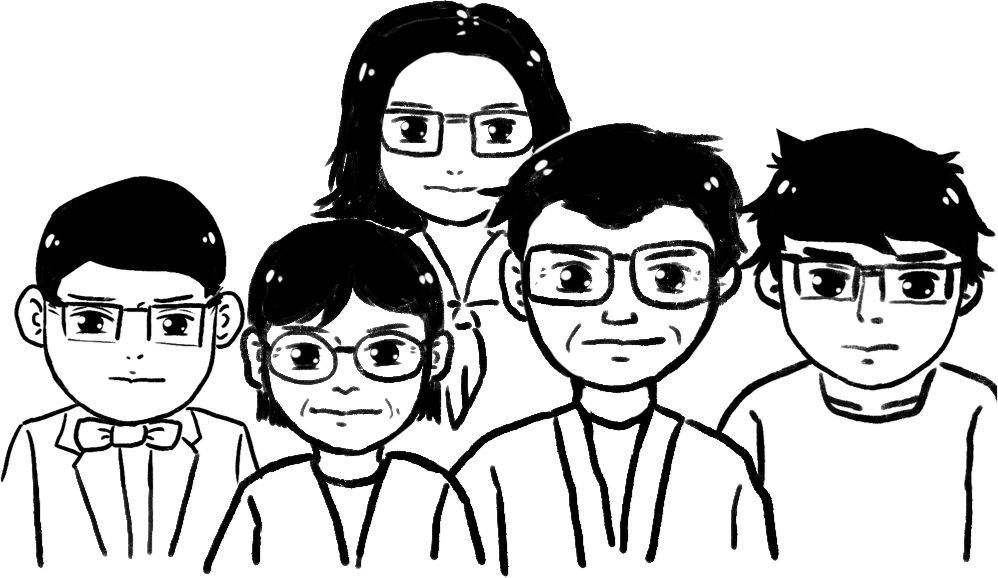Myopia, also known as near-sightedness and short-sightedness, is an eye disorder where light focuses in front of, instead of on, the retina. As a result, distant objects appear blurry while close objects appear normal. Other symptoms may include headaches and eye strain. Severe near-sightedness is associated with an increased risk of retinal detachment, cataracts, and glaucoma.
According to the world report on vision released by the World Health Organization, there are currently about 2.6 billion people with myopia in the world, of which 312 million people are under the age of 19. The prevalence of myopia in children and adolescents has increased in recent years and will continue to increase substantially in the coming decades. The report shows that in modern society, people stay indoors for a long time to engage in a large number of “near-work activities”, which has led to an increase in the number of people with myopia around the world.
Environmental factors: when it comes to the causes of myopia, people are increasingly realizing that the environment in which they spent most of their time plays an indispensable role. It is a fact that some school-age children who are given 40 minutes or more time to do outside activities are less likely to develop myopia than those students who are not given the same amount of outdoor exposure according to a study. That is to say, the longer time you spend outside, the less chance you may have near-sightedness.
Genetic factors: nearsightedness tends to run in families. If one of your parents is nearsighted, your risk of developing the condition is increased. The risk is even higher if both parents are nearsighted.

Which light is good for myopia?—sunlight and tunable LED light
Sunlight: myopia or short-sightedness is a very common vision problem. And there is scientific evidence showing that sufficient sunlight is beneficial to vision health. Alternatively, occasional exposure to sunshine can help us prevent myopia to some extent. However, we are often informed that long-time sun exposure is harmful to our health because of thinning of the ozone layer. So you’d better slather on sunscreen every two hours and avoid being outside between 10 AM and 2 PM.
Tunable LED lighting: besides sunlight, tunable LED lighting can help reduce the incidence of myopia as the lighting can serve as a substitute for natural sunlight. It’s a fact that many children have short-sightedness resulting from long-time “near-study” and short-time exposure to natural light. However, Solid-state lighting (SSL), with tunable spectral power distribution (SPD) enabled by LED sources may change this trend by offering similar lighting needed for the optimal adjustments of eyes. Apart from genetic and environmental factors, reduced exposure to specific wavelengths in sunlight is another element of myopia. Meanwhile, the research studied by Scott Read and his colleagues showed that approximately 840–1450 lx in the 480-nm band had a positive effect on reducing axial elongation of the eye, which means the wavelength of sunlight can be simulated and manufactured. Tunable LED lighting can produce a similar wavelength as the sunlight.
Blue light: some ophthalmologists put forward that when the wavelength of blue light is below 445 nanometers and the light intensity exceeds a certain threshold, there will be photochemical damage to the retina after irradiation for a long time. In addition, short-wave blue light near 435-440 nanometers is the most harmful. Some experts pointed out that the main damage of blue light to the eyes may be macular degeneration in the fundus, but this is produced under long-term, high-intensity irradiation. What’s more, long-time “office work” towards some electric products like computers and phones may lead to the decreased accommodation of eyes, which will cause myopia.

In a word, sunlight is the best light for our eyes and proper irradiation of natural light is beneficial to our health. Besides sunlight, tunable LED light can be used as a substitute of sunlight for our daily work and study. However, the attachment to blue light over two hours may have a bad influence on our eyes and further cause myopia and some eye diseases.
Which light color is best for the eyes?—daylight
When choosing a bulb for your lamp, you need to consider the color temperature because it can affect your mentality and mood. Furthermore, it is typically denoted by a Kelvin rating (usually between 2700k and 6500k) and can be clarified into soft white, warm white, daylight, and so on.
The following is a classification of the color temperature of different light bulbs:
Soft white (2700k to 3000k) is yellow and warm, which can be attained from incandescent lamps and some LED lamps. Bulbs with this color temperature can bring a warm and comfortable atmosphere to people. Generally, it is suitable for many spaces, such as the living room, study room, and bedroom.
Warm white (3000k to 4000k) is warmer and whiter. This color temperature is very appropriate to be used in the kitchen and bathroom.
Bright white (4000k to 5000k ) is between white and blue. Compared to the former two color temperatures, it is not so comfortable and energetic. Therefore, you’d better use it in some workplaces like family offices and underground garages.
Daylight (5000k to 6500k) is more similar to blue. This light shade will maximize color contrast, making it ideal for work, reading or makeup.

Based on these considerations, you’d better think about the places and spaces in which you use light bulbs before choosing an appropriate bulb for your room. Alternatively, you might need daylight bulbs beside your dresser or soft white bulbs in your bedroom. And you probably don’t need daylight on your dining table or soft whites in your kitchen.
Nowadays, you can choose a lamp with several changing color temperatures with the development of stepless dimming. For example, a good shelf floor lamp is suitable for living rooms, bedrooms, and offices with a wide range of color temperatures (3000K/5000K/4000K). In addition, an arc floor lamp can be also applied in different spaces with 4 modes of color temperatures and stepless dimming. What’s more surprising is that the arc floor lamp is equipped with remote control, so you can free your hands and adjust the color temperature with ease.
Additional Lighting Tips
- Use enough adjustable brightness. Alternate use of warm and cold color temperatures in different spaces can be instrumental in developing the regulatory function of our eyes and reducing myopia and eye diseases.
- Stay in well-lit areas. Whenever you are working or studying, you’d better avoid a dim environment, as dim light may increase eye fatigue.
- Use multiple light sources. As the famous architect and designer, David Rockwell said, “the brightest room, where layers of light come together“. So it follows that we need multiple light resources in our rooms to get enough light to protect our eyes and make our life more convenient. A combination of industrial floor lamps in the living room and Led floor lamps in the study room or office could be a reasonable collocation.





